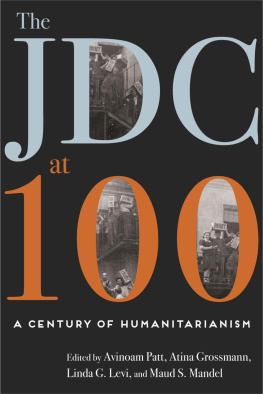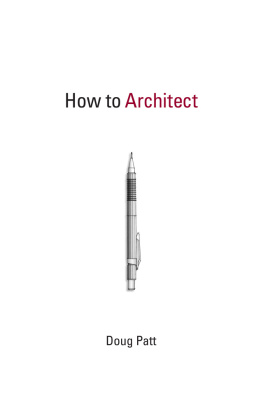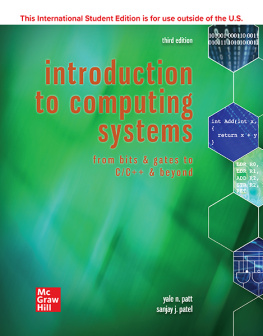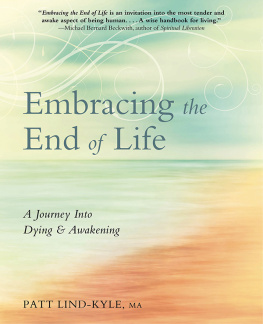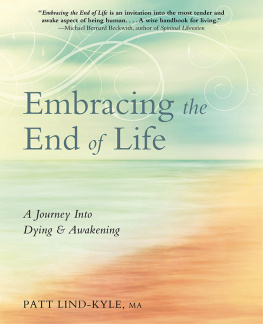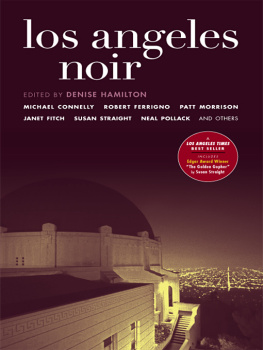2019 by Wayne State University Press, Detroit, Michigan 48201. All rights reserved. No part of this book may be reproduced without formal permission. Manufactured in the United States of America.
ISBN 978-0-8143-4234-3 (hardcover); ISBN 978-0-8143-4235-0 (ebook)
Library of Congress Control Number: 2018965069
All photographs courtesy of JDC Archives.
Wayne State University Press
Leonard N. Simons Building
4809 Woodward Avenue
Detroit, Michigan 48201-1309
Visit us online at wsupress.wayne.edu
Publication supported by the Fishman Brothers: Art, Ed, and Bob.
A JDC Archives colleague recently shared the following story:
My great-grandfather, Isidor Simberg, was taken from his wife and daughter, my grandmother, in the Riga ghetto and never heard from again. My father is named for the grandfather that he never met. But this tragic story has a happy ending. My grandmother and great-grandmother miraculously stuck together and survived three concentration camps. After the war, my great-grandmother Rosa worked for the Joint in Berlin, and on November 3, 1947, the two of them set sail from Bremen on the S.S. Marine Tiger with help from the Joint. The proof of that is in their listed destination on the ships manifestJoint, New York, NY. The Joint is a destination. The Joint is home. The Joint, in the end, is what made my familys life possible. I owe so much to the Joint and I can only hope that I can repay that in some form as one of the custodians of our organizations history.
These inspiring words and very touching personal story touch on the essence of JDC and what the organization has represented for so many over the last century.
Established in reaction to a now-renowned telegram sent by Henry Morgenthau, US ambassador to the Ottoman Empire, in August 1914, the Joint Distribution Committee for the Relief of War Sufferers was established to assist Jews in Europe and Palestine who were affected by the devastation of World War I. Jewish communities experienced calamity, revolutions, war, pogroms, and harsh poverty. It is difficult to imagine life for the Jewish communities in Poland, Romania, and Russia during World War I and in the interwar years without the extensive, life-affirming assistance provided by JDC.
The Shoah and JDC are inextricably linked. This speaks to the history of JDCs heroic attempts to save as many Jews as possible from the clutches of the Nazis in Europe. JDC saved hundreds of thousands of lives in its tireless efforts to rescue Jews from Europe. The records of JDC document the lengths taken to find countries of refuge; raise funds; lease ships; guarantee passage, care, and maintenance; and offer relief assistance. From Cuba to Shanghai, from Barcelona and Lisbon to Tangier and the Dominican Republic, JDC offered rescue and refuge to hundreds of thousands. In the displaced persons (DP) camps of Europe and on the routes to these camps from across Eastern Europe, JDC was there to assist the survivors of the Shoah (the Holocaust) and to extend a helping hand and a smile. JDC was there to help DPs establish themselves in new countries.
And along with the calamities seen by the Jewish people, there were moments of inspiration and rebirth. The establishment of the State of Israel and the rebuilding of Jewish communities in Europe in the postwar period offered hope and a future to the survivors. JDC worked closely with the fledgling government in Israel to develop services for the disadvantaged and sick, for the elderly, and for the handicapped. Indeed, JDCs imprint is found on the beginnings of many major social welfare institutions in Israel. In Europe, Africa, and Asia, JDC worked with local Jewish communities to improve the lot of the needy, the poor, and the sick and helped establish communal institutions such as homes for the elderly, kindergartens, Jewish schools, social welfare programs, health clinics, and hospitals.
JDC was the address for Jews who needed to leave their countries due to war and dislocation or for political reasons. It offered help to Hungarian Jews following the 1956 revolution, to Polish and Czech Jews in 1968, and to Soviet Jews who left the Soviet Union in the 1970s to the 1990s. And glasnost presented the opportunity to reconnect with Jews in the former Soviet Union.
The last 100 years have been witness to much tragedy for world Jewry. Jewish communities have known calamity, revolutions, war, pogroms, and the Shoah (the Holocaust). Many Jews and others have benefited from the help provided by JDC around the world. Indeed, the organizations name became well known, legendary for generations of Jews. The Joint was a code word for hope, for help, the 911 of the Jewish people.
In the contemporary period, JDC continues with its mission of rescue, relief, and renewal, caring for scores of thousands of survivors; working to rebuild and strengthen Jewish communal life where it had been all but extinguished; promoting innovation; and helping to strengthen Israels social fabric.
I was approached in 2012 by a young scholar, also inspired by the work of the Joint, who proposed the idea of planning a scholars workshop to celebrate the centennial of the American Jewish Joint Distribution Committees global activism and humanitarian aid, which would involve historians and scholars in the 100th anniversary celebrations of the Joint in 2014. The research of these scholars demonstrates the depth and breadth of the JDC Archives and the organizations past activities. By presenting the historical aspect of JDC, historians could speak to JDCs deep, unwavering commitment to helping Jews worldwide, irrespective of their background, even through the most challenging times.
Thus was borne the idea for the scholars workshop that took place in September 2014 and brought together twenty-five scholars from around the world whose research focuses on the work of JDC. This two-day gathering in New York City, which was also attended by a group of key JDC leaders, was an inspiring and uplifting event, generating a tremendous amount of enthusiasm and excitement. The predistributed papers indeed pointed to the new research being done on JDC, bringing together JDC leaders and the scholars whose work focuses on the Joint and enabling the group to examine JDC as a whole. The presentations focused on the analysis of the work of JDC in different locales and in every decade over the last century. The discussions grappled with the challenges addressed by the Joint, the role of prominent JDC figures across regions, the lessons learned, and more.
This encounter between JDC leadership and historians and scholars can help raise public awareness of JDCs incredible activism and foster new ideas for collaboration.
The JDC Archives is one of the most important repositories of modern Jewish history, given the depth and breadth of the organizations activity, and is committed to encouraging and assisting scholars who wish to conduct research in its historic collections. Extensive digitization of the text, photo, and other collections over the last eight to nine years has made these records even more accessible to scholars and others wishing to conduct research. The JDC Archives website can be accessed at http://archives.jdc.org.


